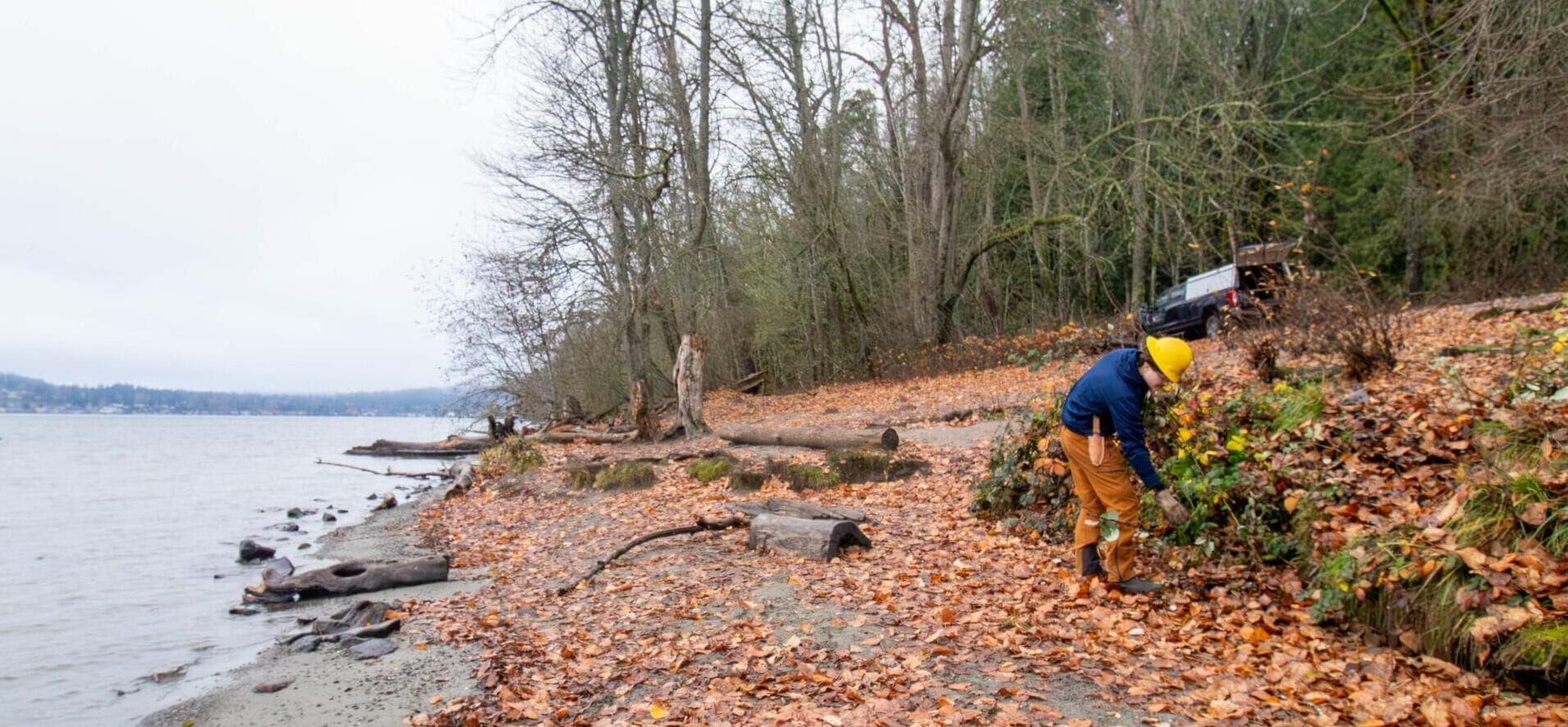Restoration at Saint Edward State Park
Just a few turns off a busy road in Kenmore lies Saint Edward State Park, a serene recreation area with a rich history and an array of walking trails and waterfront views. The park is also home to important salmon habitat along Lake Washington, which is why it’s the site of one of the Mountains to Sound Greenway Trust’s most recent restoration projects in partnership with the Washington State Parks and Recreation Commission.
History of Saint Edward State Park
According to HistoryLink , the land at what’s now Saint Edward State Park was used for logging in the 1920s, which created trails down to the waterfront. After the area was cleared, it was used for farming and eventually housed the first successful Catholic seminary in the Pacific Northwest. Students lived at the seminary and even took part in the construction of trails that still stand today. The seminary also served as a university up until 1976, when it was sold to Washington State and preserved as Saint Edward State Park.
More recently, the seminary buildings have been transformed into The Lodge at Saint Edward State Park, a landmark hotel that opened in 2021 and celebrates the park’s rich history. Also on the property, the Environmental Education and Research Center commenced operations in summer 2022, integrating environmental education, research, and community engagement with the purpose of advancing public understanding, scientific knowledge, environmental equity and justice, connection with nature, environmental sustainability, and stewardship of Pacific Northwest ecosystems and the larger world.
A Changing Shoreline Habitat
While taking trails down to the shore, community members might notice recent changes to the usual landscape, one of the biggest differences being the removal of bulkheads and boulders at the water’s edge. These bulkheads, better known as rip rap, were likely placed along shorelines in the 1930s by seminarians to prevent erosion of the shore and provide foundational support. Man-made supports like these may seem like a useful preventative tool but they often have negative implications for riparian habitats like the one at Saint Edward’s.

Understanding Riparian Zones and the Impact on Salmon
Riparian habitats are unique because they include the transitional zone between aquatic and terrestrial environments, like riverbanks or lakefronts. In addition to being a beautiful park, home to winding trails and unmatched views of the lake, the shoreline is a key habitat for juvenile salmonids. Typically, young salmonids prefer woody, shaded areas with natural vegetation, perfect for keeping out of the sun and hiding out from any potential predators. At this early and vulnerable stage, these salmonids rely on riparian ecosystems to make it to the next stage of survival.
Rip rap placed along these key areas poses environmental challenges for these fish. Concrete debris and large rocks eliminate the native vegetation typically found along these shorelines, limiting shade and woody debris. Young salmon struggle to find hiding places amongst the rocks and are exposed to potential predators. Rip rap also influences water velocities around the shoreline; the smooth rock causes water to flow faster in these areas compared to heavy vegetation that slows down the movement of water. Smaller juveniles prefer slower-moving water, so these rip-rap-heavy areas are not ideal for young salmon.
For generations, Washington state salmon populations have been declining, causing economic and ecological consequences for local communities. Restoration projects like this one can revitalize salmon habitats and in time, help bring salmon populations up to a healthy level. Read more about the importance of restoring salmon habitats here.
Working Together for Improvements in the Park
To create more areas for juvenile salmonids to thrive, the Mountains to Sound Greenway Trust (Greenway Trust) continues to work with partners on several projects that focus on restoring shoreline habitats to their natural state. Restoration work at Saint Edward Saint Park began in 2023 when the Washington State Parks and Recreation Commission (State Parks) partnered with the Greenway Trust to restore portions of the shoreline, remove non-native species, and reroute a section of the shoreline trail. This project was funded by grants from the King County Flood Control District (Cooperative Watershed Management grant through the Lake Washington/Cedar/Sammamish Watershed – WRIA 8) and the Department of Ecology. This project builds on a long history of salmon conservation work by the Greenway Trust and various partners, including our restoration efforts at Lake Sammamish State Park.
In the spring of 2023, the Greenway Trust Trail Crew began work at Saint Edward State Park. Crew members rerouted sections of the trail away from the water, allowing hikers to safely recreate without compromising the integrity of the shoreline or disturbing any potential juvenile salmon habitats. Shortly after the trail rerouting, State Parks started riprap-removal efforts, using cranes attached to barges to pull out the bulkheads and concrete debris from the shoreline.
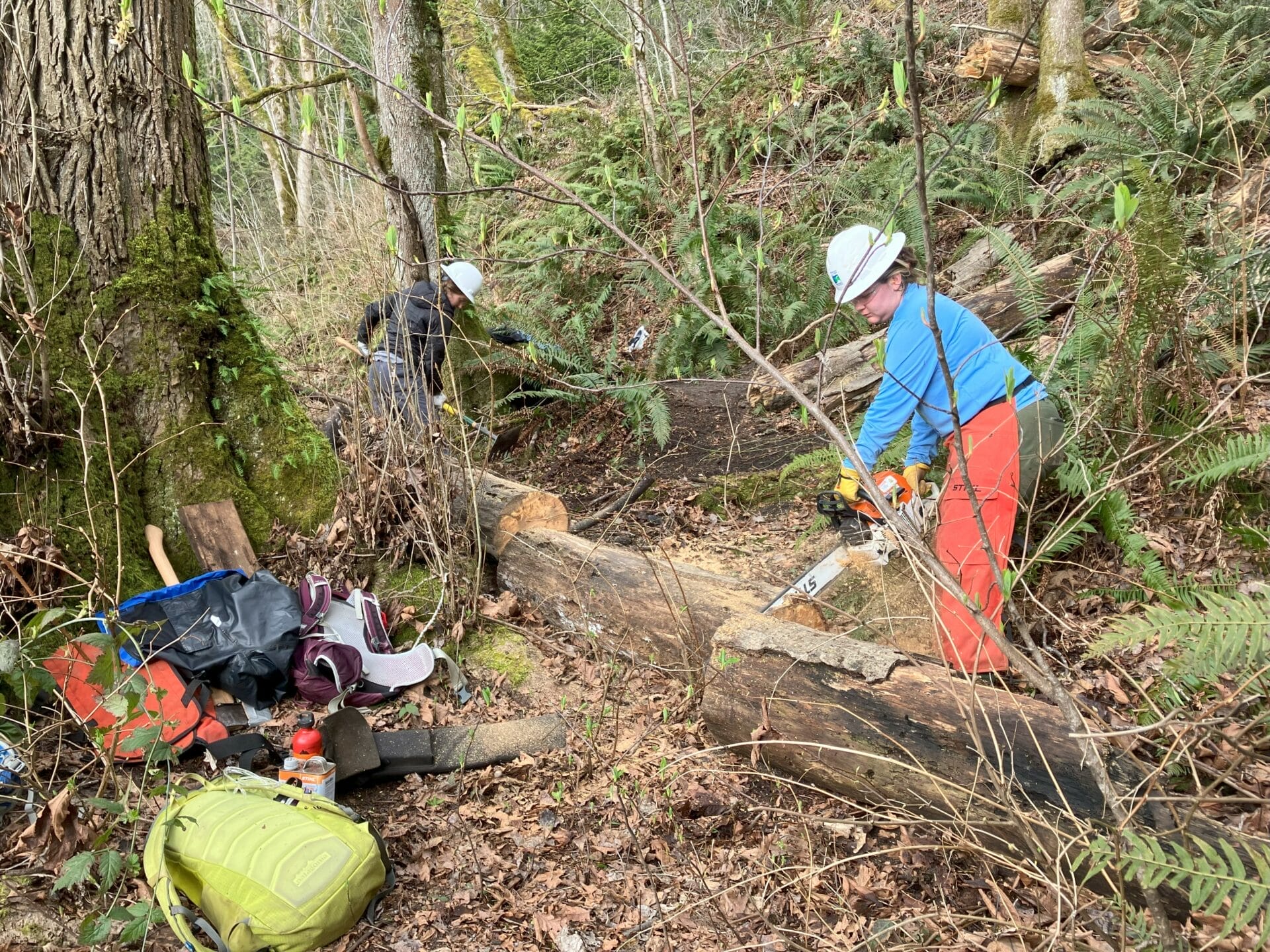
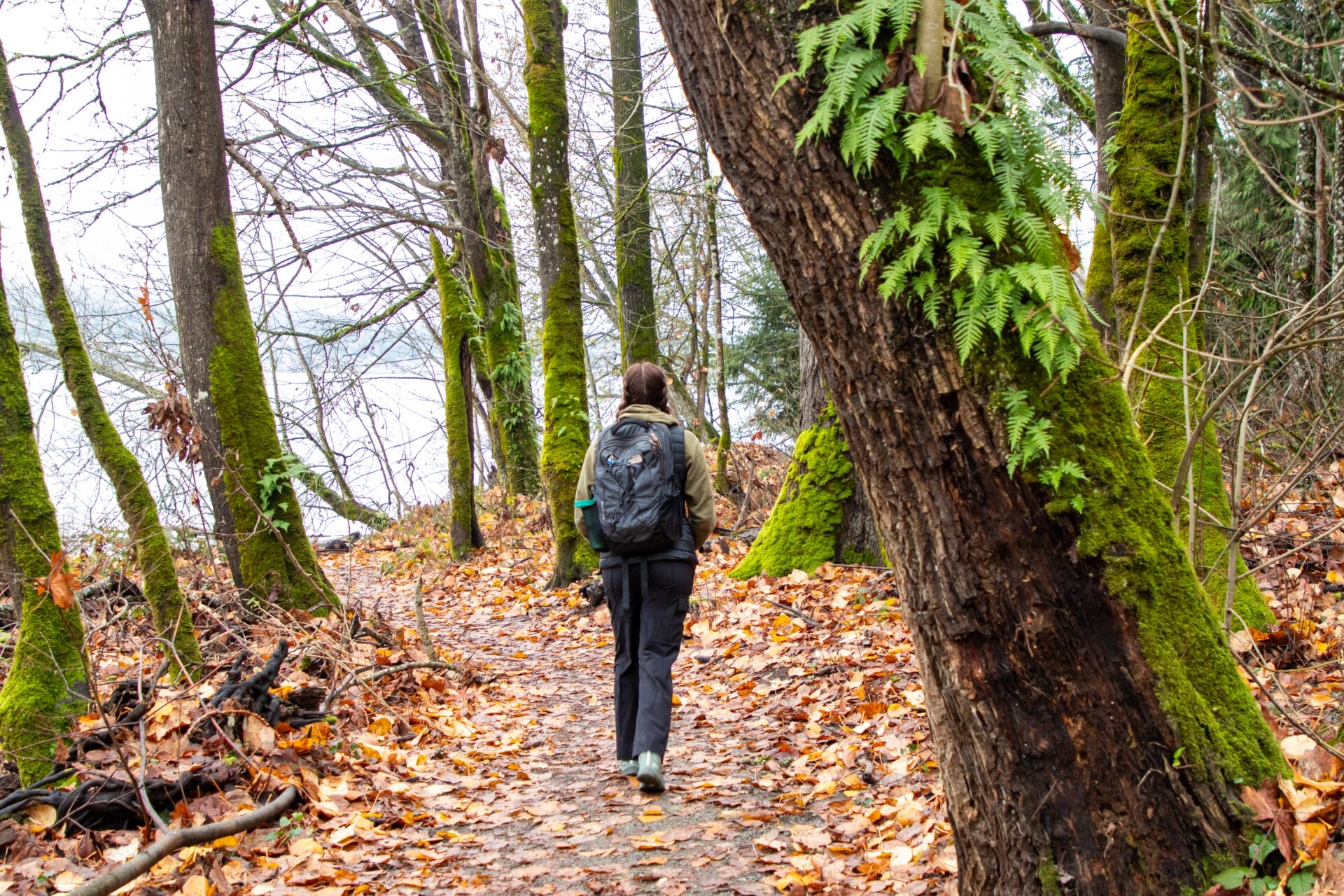
The last phase of the project was completed in the fall of 2023 when the Greenway Trust’s restoration team oversaw non-native plant removal and planting efforts completed by a Washington Conservation Corps (WCC) Crew. Working with the Greenway Trust and State Parks, the WCC Crew removed about 0.13 acres of non-native plants like English ivy, Himalayan blackberry, English holly, and English hawthorn, while installing 400 potted plants and 300 live stakes along 620 feet of the shore. Revitalizing the natural landscape with native plants, mulch, and seed mixes acts as a built-in protection from any further erosion or degradation of the shore.
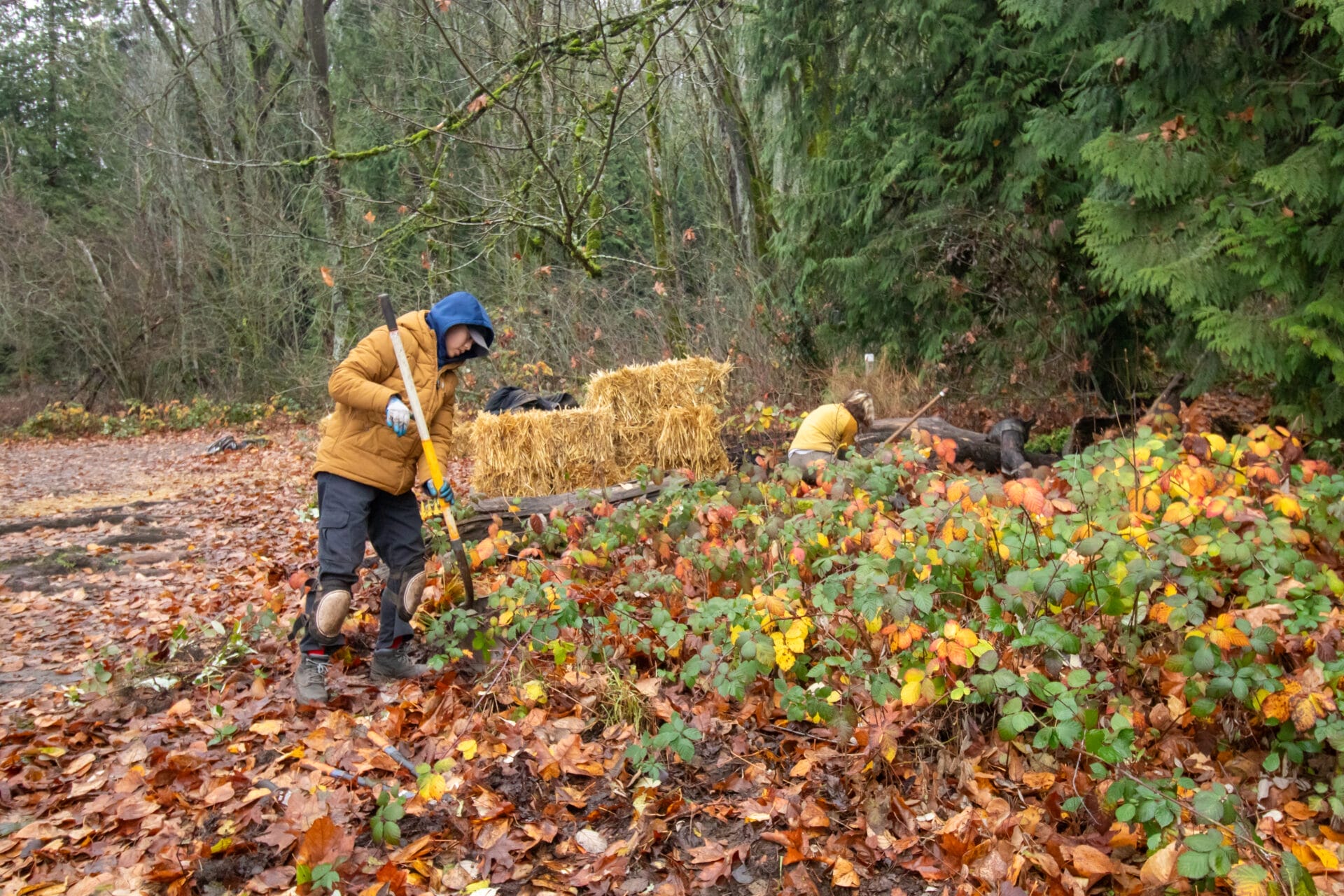
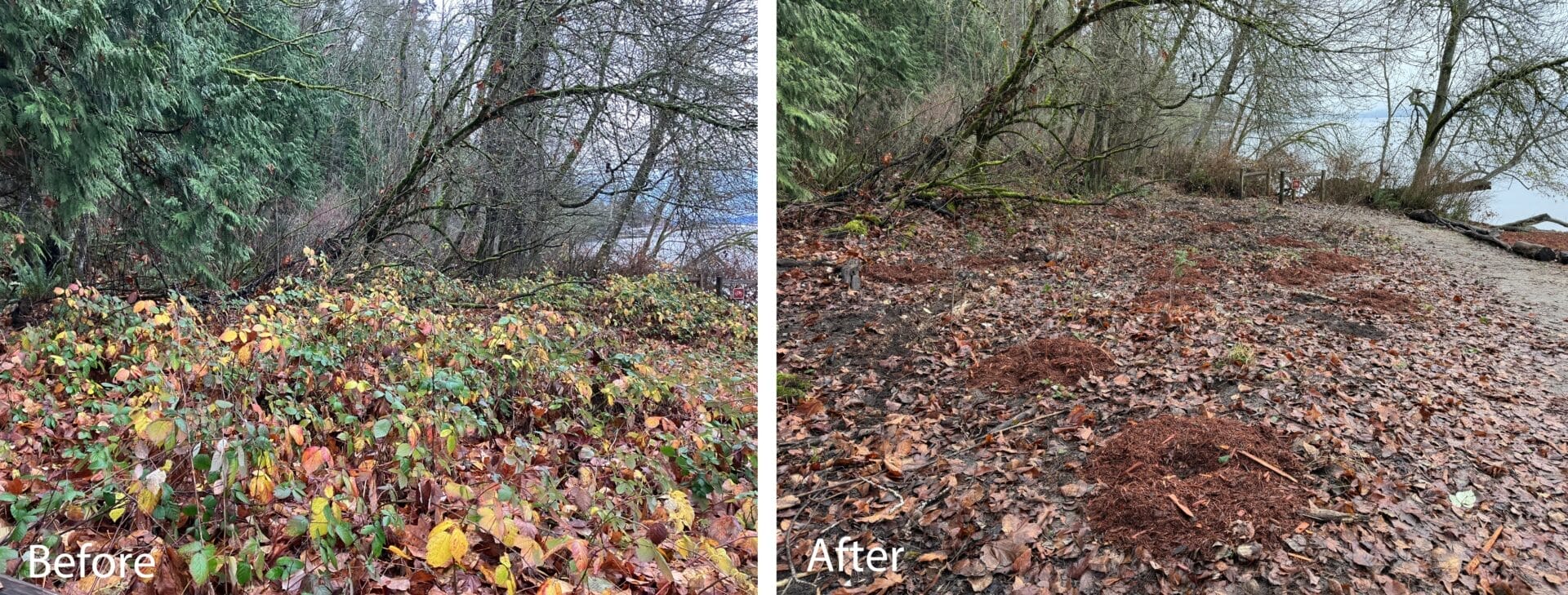
By returning the shoreline to its original landscape, there is hope that Saint Edward State Park will welcome new groups of juvenile salmon to flourish along the shore, encouraging the community to learn more about salmon and recreate responsibly in the park.
Want to learn more and explore Saint Edward State Park? Get more information about the park here.

